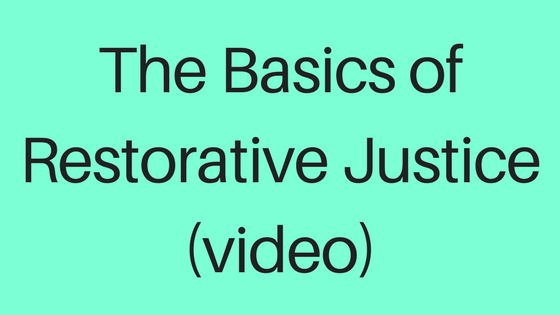The Basics of Restorative Justice in Education
So while it takes a little more time, be willing to take a seat back, discuss with the students, come up with solutions, and focus on your relationships. Click To TweetFull transcript below video.
Video Transcript
Hey guys! I’m Rae and I am so excited because we get to talk about restorative justice. Now this is a very hot topic and even though restorative justice is all over the place, I still have teachers telling me, “I don’t know that is i don’t know how to use it, and I’ve heard that it doesn’t work.
I wanted to clear the air with just some general information on restorative justice. Now I am actually in a building where we are utilizing restorative justice, and it’s really making a huge impact on how students mindsets are changing as they move throughout our building and deal with challenges. So let’s talk about the basics.
Restorative Justice is a new topic simply because it is requiring teachers, it’s requiring administrators, it’s requiring everybody to really take a step back and think about how are they framing their conversations with students. Right, so as a teacher approaches a student that is doing something that you would like to correct, there are a million different ways that you can handle it.
However, utilizing restorative justice focuses the conversation to be building on relationships. So if I go up to a student that’s not necessarily doing something I would like, restorative justice really focuses on me approaching the conversation to address how it is affecting my relationship with the student and the student’s relationships with the peers around them.
Now here are some problems with that, when teachers do this, it actually takes more time than just the typical detention, you’re done. It takes more effort than the I’m calling the home, get lost. It takes more energy than, “I’m sorry I’m taking away this object that’s bothering you and now we are moving forward.” Well a lot of that energy is really worthwhile. Being able to sit down with a student and having a conversation and have reflection is not a new concept in education, it’s just something that a lot of teachers are choosing to overlook.
So restorative justice really requires the educator and administrators and anyone in the school building to really approach the relationship component with students. Now I’m on Twitter fairly often and it’s commonly a hot topic in my PLN, my personal learning network, that we need to be building relationships with students. So in my opinion, restorative justice seems to blend itself really well. As we continue to build relationships with our students, as we continue to make that an enormous focus in our classroom.
We also need to make sure that’s an enormous focus at all times in our classrooms, not just at those happy times, but also at the times when we need to correct behavior.
So that was just a general overview of restorative justice, there are hundreds of resources out there. One of them specifically is a book that I like, it’s called Better Than Carrots and Sticks. I think I recommend it to about everybody that asks me about restorative justice, it’s a really easy read, I did it for a book study, and I very much recommend that story. It’s not only a great book in terms of building your knowledge of restorative justice, but it has a lot of really good resources like starter sentences that you can utilize.
I am also happy to share any of my restorative justices resources with you, so that you are able to start framing your conversations around building relationships more than just correcting behavior, because we are building true leaders in our community. So anyway we can approach our time with them is valuable.
So while it takes a little more time, be willing to take a seat back, discuss with the students, come up with solutions, and focus on your relationships.



